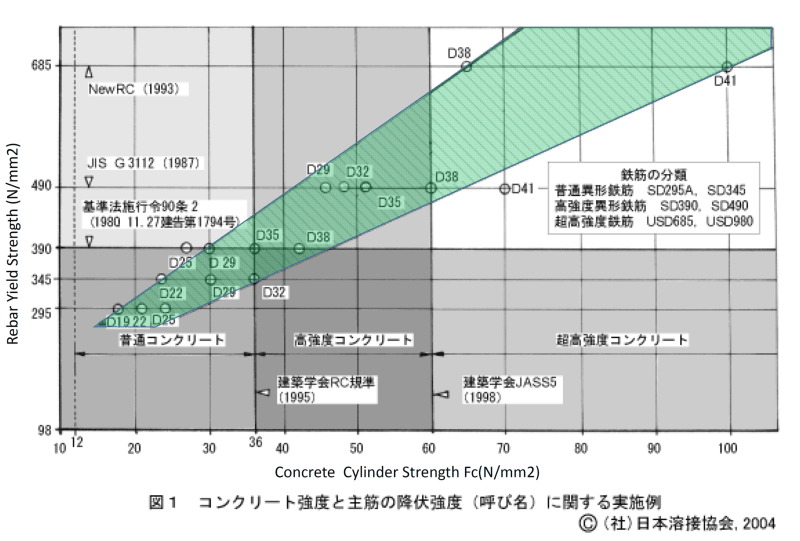Hi all!
I am relatively new to structural engineering design and am working on a project in a moderate seismic zone.
To cut to the chase:
My senior engineers want to use 400 MPa yield strength for rebar in the main structural elements.
The concrete compressive strength is 40 MPa (cube strength).
However, the client would rather we used 500 MPa rebar.
The senior guys are fighting this because they're worried about lack of bonding between the concrete and rebar - especially at column-beam joint locations.
They are arguing that if the client wants to use 500 MPa steel, they need to use much higher strength concrete (circa 60 MPa or more).
As the (somewhat) middle man, I have to defend our decision to the client (ノಠ益ಠ)ノ彡┻━┻
...And the client is asking what building code we're using to support our arguments.
Problem is: I can't find any explicit statements in any building code to support our argument. It seems like the issue is related to pull-out or splitting failure of the RC members, and I can only find mentions of these in research papers.
Could anyone help pinpoint a code reference to support the argument?
Thanks in advance
-------------
Ilyas
I am relatively new to structural engineering design and am working on a project in a moderate seismic zone.
To cut to the chase:
My senior engineers want to use 400 MPa yield strength for rebar in the main structural elements.
The concrete compressive strength is 40 MPa (cube strength).
However, the client would rather we used 500 MPa rebar.
The senior guys are fighting this because they're worried about lack of bonding between the concrete and rebar - especially at column-beam joint locations.
They are arguing that if the client wants to use 500 MPa steel, they need to use much higher strength concrete (circa 60 MPa or more).
As the (somewhat) middle man, I have to defend our decision to the client (ノಠ益ಠ)ノ彡┻━┻
...And the client is asking what building code we're using to support our arguments.
Problem is: I can't find any explicit statements in any building code to support our argument. It seems like the issue is related to pull-out or splitting failure of the RC members, and I can only find mentions of these in research papers.
Could anyone help pinpoint a code reference to support the argument?
Thanks in advance
-------------
Ilyas

